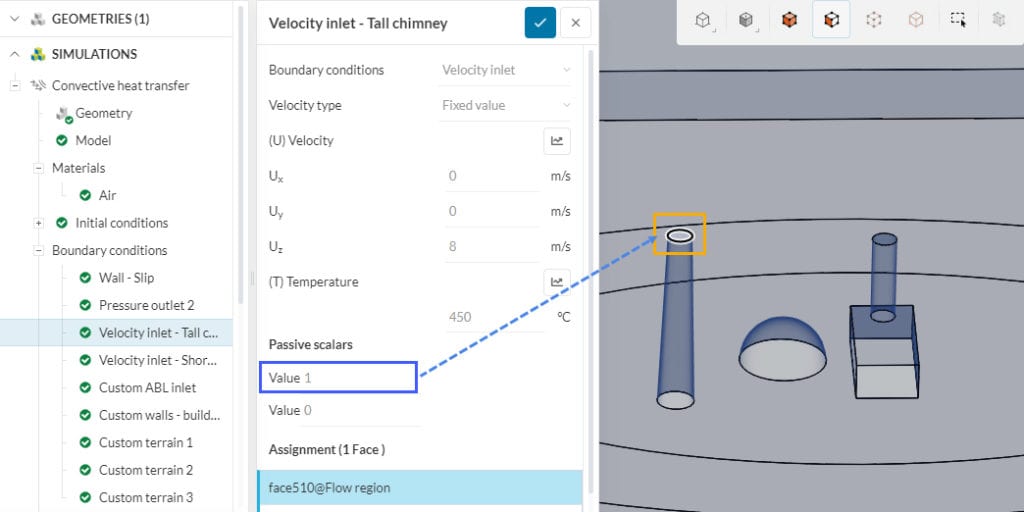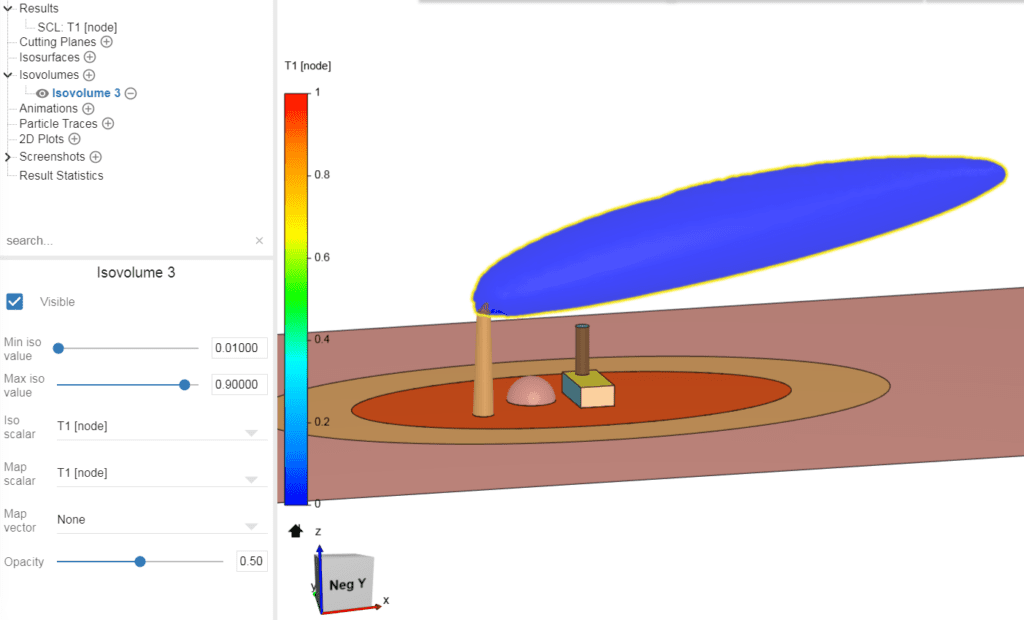This article is intended to clarify the confusion regarding the (φ) Flux and T1 terms occuring in simulations involving passive scalar sources.
What Is (φ) Flux Term?
Flux is a non-dimensional parameter, which represents the concentration. Because this parameter has no influence on fluid properties, the user can define it as a percentage (%), ppm (parts per million), ppb (parts per billion), or any other concentration unit.
Flux can be defined in two ways:
- (φ) Flux: Concentration per unit time \([1/s]\)
- (φ) Flux: Concentration per unit volume \([1/m^3s]\)
What Is T1 Term?
If you are using SimScale’s old post-processor then T1 is a parameter in solution fields, representing the passive scalar concentration inside the domain. The unit of T1 is the same as flux defined in passive scalar sources in Advanced concepts or the passive scalar value defined in Boundary conditions (shown below).


The above examples are from SimScale’s tutorial Contamination of Power Plant. Make sure to go through it.
To learn more about passive scalar sources and how to apply them inside the Workbench follow this documentation.
Note
If none of the above suggestions solve your problem, please post the issue on our forum or contact us.